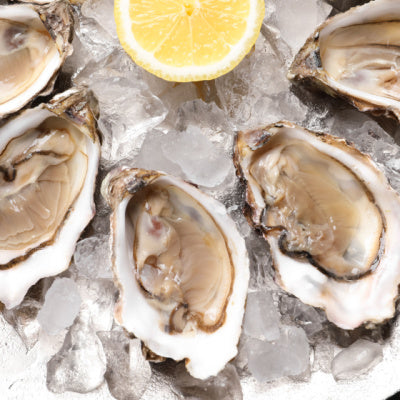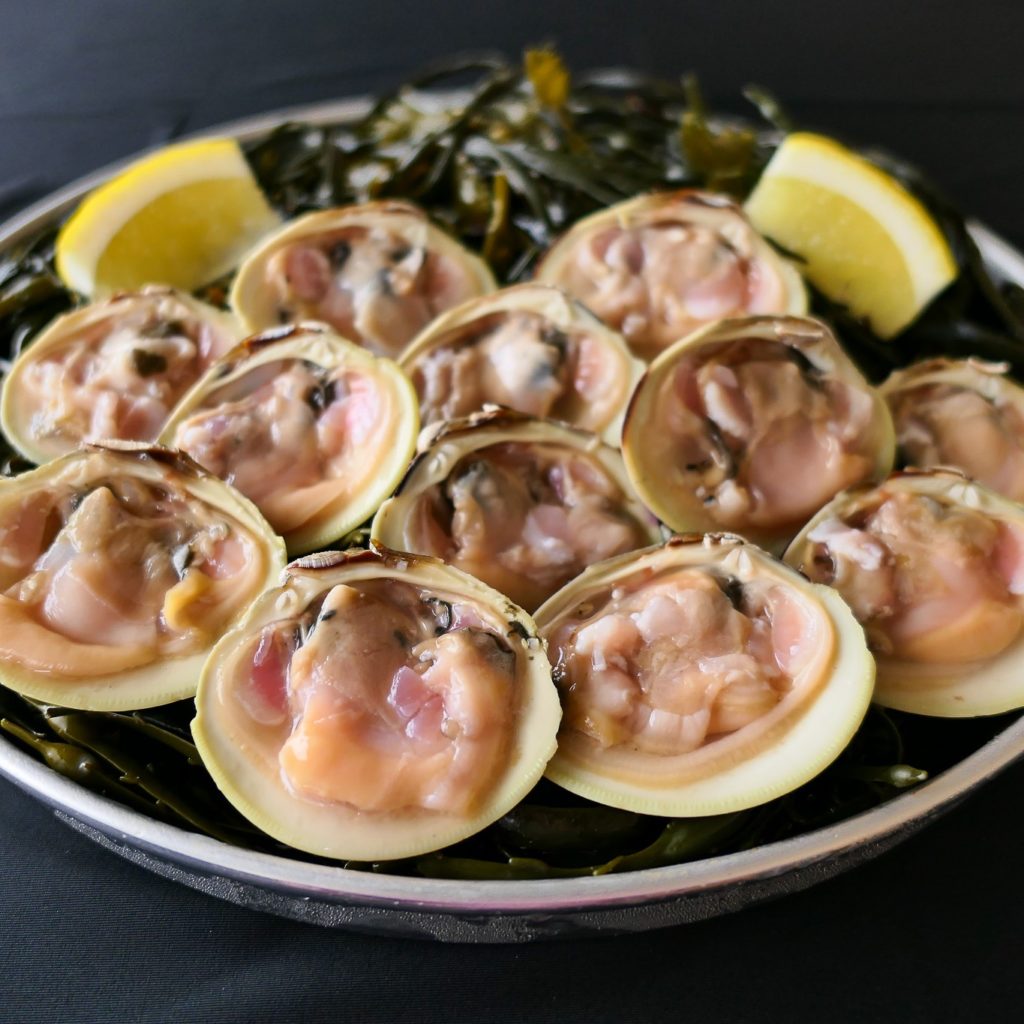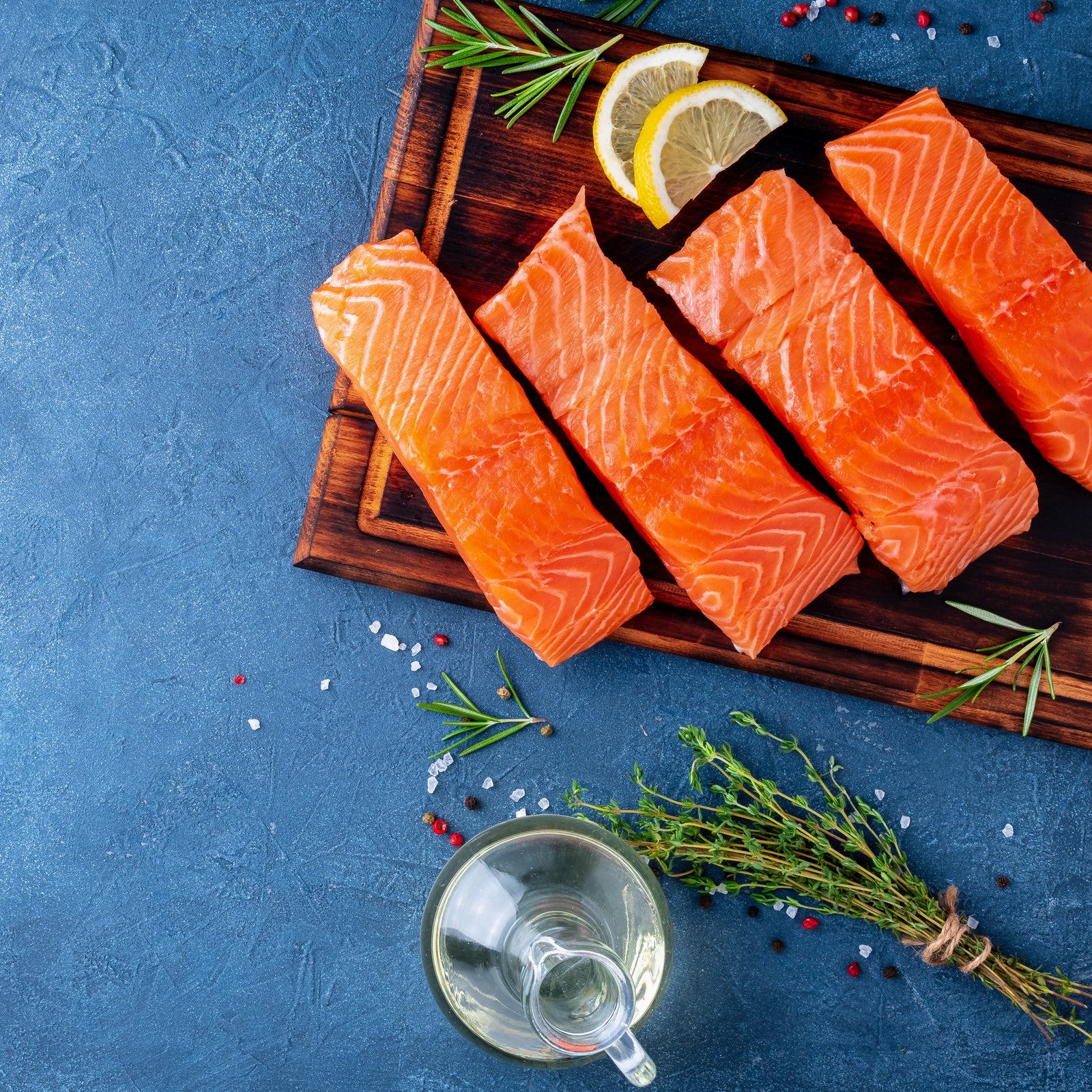Your Cart is Empty
FREE SHIPPING ON ALL ORDERS OVER $125!
FREE SHIPPING ON ALL ORDERS OVER $125!
FREE SHIPPING ON ALL ORDERS OVER $125!
Seafood is a quick to prep, delicious to eat, and so good for your body! Read on for some easy Whole30 recipe ideas on how to incorporate North Coast Seafoods into your January Whole30 Meal Plan.
By Judith Forman
Whole30 Advance Level Certified Coach
In the cold, dark winter months, taking care of ourselves – eating and hydrating well, sleeping enough, moving our bodies, and managing stress – is more important than ever.
For many people, winter is a great time to do a round of Whole30, a nutritional reset that prioritizes protein, produce, and healthy fats. With Whole30 comes lots of food prep – and North Coast Seafoods is a huge help in getting quick and delicious meals on the table.
Before I share some of my favorite ways to incorporate North Coast Seafoods into my Whole30 meal plan, I checked in with a few friends to learn more about the health benefits of regularly consuming seafood – and the best ways to prepare it.
"Seafood is high in protein, low in saturated fat, and has lots of Omega-3 fatty acids, which support several critical functions throughout the body,” says Registered Dietitian and Whole30 Advance Level Certified Coach Whitney Stuart.
“The Omega-3 fatty acid levels found in fish can help reduce your risk of inflammation, and improve blood quality and heart health,” she says. “And the health benefits of fresh-caught seafood aren’t just limited to the body’s behind-the-scenes functions. Seafood also can help to improve brain and muscle function as well as oxygen and blood flow.”
Stuart recommends eating fish high in Omega-3s, such as salmon, at least two to three times a week to help support good heart health.
"Seafood is also a great source of bioavailable protein, and depending on the type of fish, a host of other nutrients too, from iodine to vitamin D", says Registered Dietitian and Certified Personal Trainer Samantha Presicci.
“Fatty fish like salmon, trout, sardines, herring, tuna, and mackerel are some of the only natural food sources of vitamin D, which is essential for immune health, and it also may help decrease the risk of autoimmune disease, improve sleep quality, and support bone health,” says Presicci, who’s also a Whole30 Advanced Level Certified Coach. “Vitamin D is also responsible for a number of other cellular functions in the body."
Over the years, Boston-based Chef Brian Poe has seen more and more people become comfortable prepping and cooking seafood in their own kitchens. This was especially apparent during the early days of the pandemic, when Poe says he was overwhelmed with texts filled with pictures of beautiful dishes – including tuna, salmon, yellowtail, and lobster – that his restaurant customers were making at home.
“Seafood is your fastest ticket to an easy gourmet meal at home,” says Poe, Chef/Owner of The Tip Tap Room, Parish Café, and Crane River Cheese Club. “In this day and age, the harvesting of seafood is more respectful and brought to us fresher than ever before. With seafood, the possibilities are endless! You can grill it, steam it, sear it, serve it sushi style, or incorporate it into a gumbo or stew.”
Poe says he especially loves cooking halibut because it “can be quick seared, finished in the oven, and seasoned with fresh herbs and tomatoes to make a simple, delicious meal.”
As an Advanced Level Whole30 Certified Coach, I advise my clients to keep their cooking simple and to focus on “ingredient prep” versus “meal prep.” I encourage them to make a variety of proteins, veggies, and sauces – and to mix and match.
North Coast Seafoods helps keep my ingredient prep simple. My freezer is always stocked with a variety of seafood options – ranging from individually sealed salmon and cod fillets, raw and cooked shrimp, scallops, and lobster meat. When I need some protein, I grab a seafood option, defrost it, and I’m ready to cook! I serve it with whatever vegetables and healthy fats I have on hand and I’m set with an easy Whole30 meal.
North Coast’s Naked Seafood is flash frozen at extremely low temperatures, which locks in peak freshness and flavor. As a result, the fish remains fresh and delicious in my freezer – and it’s always ready for me when I am ready to cook it!
Below, find some of my favorite EASY ways to incorporate North Coast Seafoods into my Whole30 meal plan. Be sure to check out this video for a quick tip on how to know if your fish is fully cooked!
Once removed from the heat, your seafood will continue cooking for a few minutes, known as "carry over cooking.” Be sure to account for this in your timing.
Looking for some more seafood based Whole30 recipes? Check out this collection from Whole30 Certified Coach Bailey Fischer of Whole Kitchen Sink.
Judith Forman is a Boston-based Advanced Level Whole30 Certified Coach. Find her on Instagram at @JujusWhole30.
Comments will be approved before showing up.


Learn about the many health benefits of shellfish! Oysters, Clams, and Mussels are rich in Omega 3 fatty acids, lean protein, and micronutrients.

Sign up to receive the best seafood recipes, first access to new products, exclusive discounts and more!